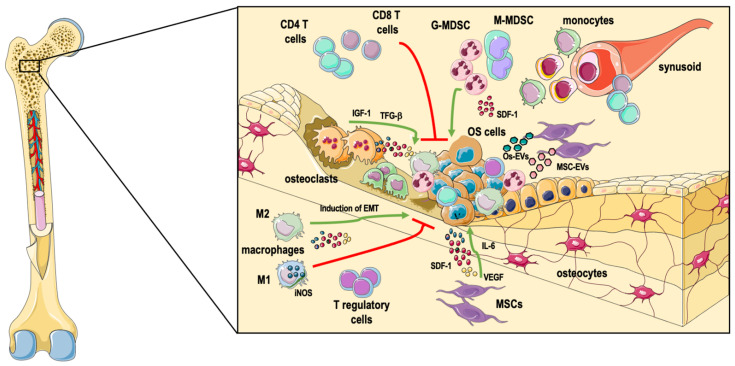Figure 1.
The complex osteosarcoma microenvironment in the bone tissue. Osteosarcoma (OS) develops in the highly specialized bone marrow (BM) environment, a highly dynamic tissue composed of bone cells, immune cells, and stromal and vascular cells, embedded in a mineralized extracellular matrix. The different cell types are reciprocally regulated, with OS cells producing factors that recruit and re-program immune, stromal, and bone cells to their advantage, and vice versa, with immune cells, osteoclasts, and stromal cells releasing pro-tumoral molecules such as VEGF (vascular endothelial growth factor), TGFβ (transforming growth factor beta), and IL-6 (interleukin-6). The cross-talk between OS cells and other BM cells may also occur through the release of extracellular vesicles (EVs). OS cells, osteosarcoma cells; MSCs, mesenchymal stem cells; EMT, epithelial-to-mesenchymal transition; G-MDSC, granulocytic myeloid-derived suppressor cells; M-MDSC, monocytic myeloid-derived suppressor cells. Red line: negative signal; green arrow: positive signal.

